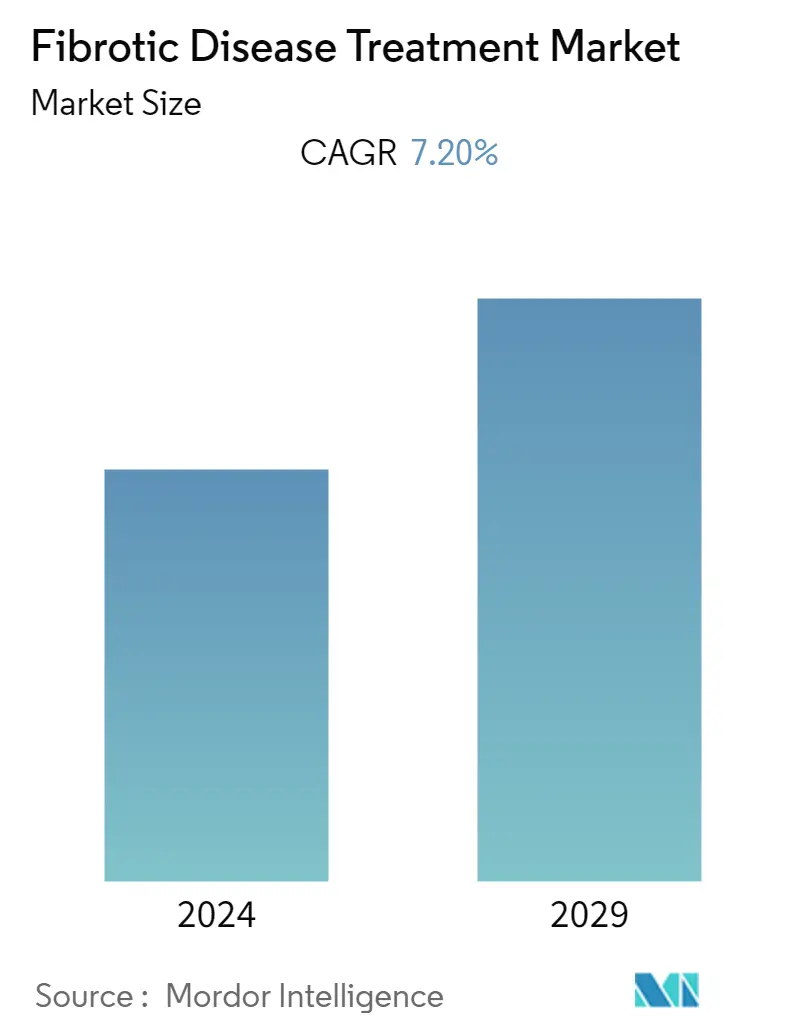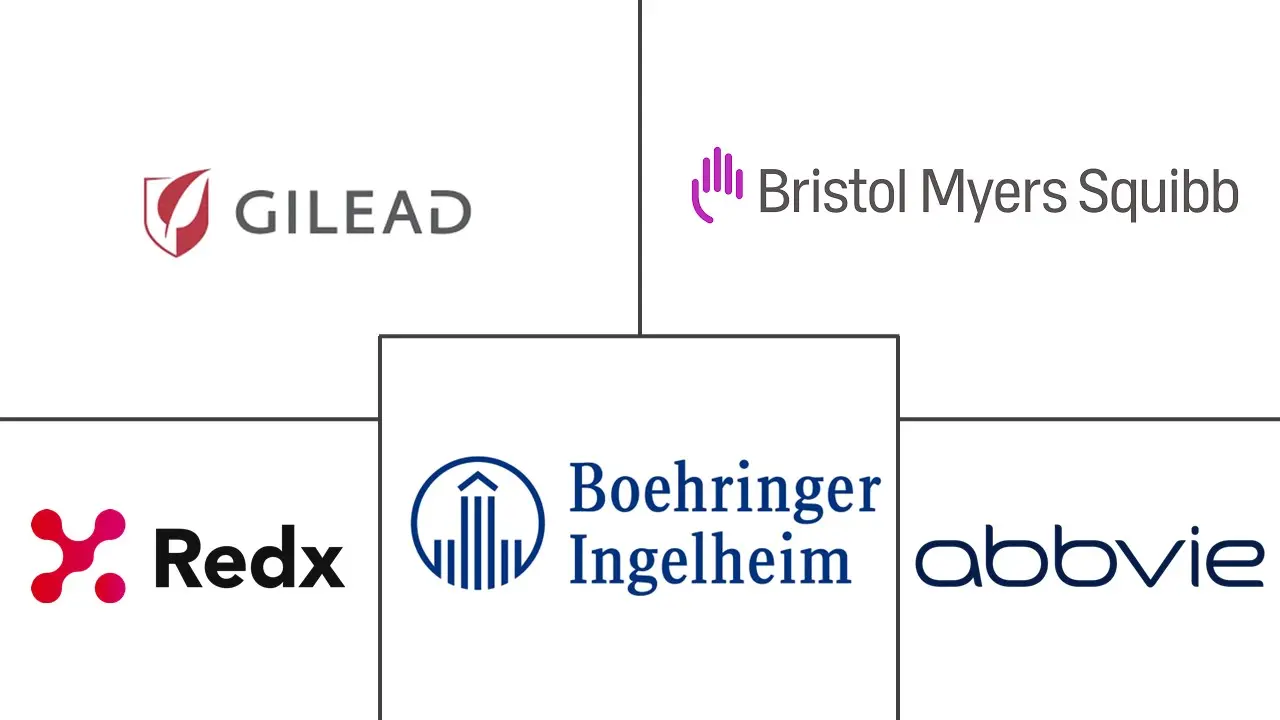Market Size of Fibrotic Disease Treatment Industry

| Study Period | 2019 - 2029 |
| Base Year For Estimation | 2023 |
| CAGR | 7.20 % |
| Fastest Growing Market | Asia Pacific |
| Largest Market | North America |
| Market Concentration | Medium |
Major Players
*Disclaimer: Major Players sorted in no particular order |
Need a report that reflects how COVID-19 has impacted this market and its growth?
Fibrotic Disease Treatment Market Analysis
The fibrotic disease treatment market is expected to grow at a registered CAGR of 7.2% over the forecast period.
COVID-19 adversely affected the fibrotic disease treatment market. The COVID-19 patients were affected by pulmonary fibrotic dysplasia as a possible consequence of COVID-19 pulmonary pneumonia. For instance, according to the study published in the Annals of Medicine and Surgery in May 2022, approximately 44.9% of COVID-19 survivors appear to have developed lung fibrosis. People infected with COVID-19 severity factors were found to be more prevalent pulmonary fibrosis (PCPF). Thus, it indicates that people infected with COVID-19 are more likely to develop fibrotic diseases, and hence there was a substantial demand for fibrotic disease treatment during the pandemic. However, the market is growing at a steady rate due to an increasing patient population with fibrotic diseases, and this trend is likely to continue during the projection period.
The major factors driving the growth of the market are the growing burden of fibrotic diseases, the increasing number of smokers, and technological advancement in the treatment of fibrotic diseases.
The growing burden of fibrotic diseases such as pulmonary fibrotic diseases, hepatic cirrhosis, renal fibrosis, and cutaneous fibrosis is expected to increase demand for effective treatment medications, which is likely to boost the market over the forecast period. According to the American Lung Association data updated in November 2022, every year, around 50,000 new cases of IPF are diagnosed in the United States. The majority of IPF patients initially notice symptoms between the ages of 50 and 70. Furthermore, according to the article published in the British Medical Journal in September 2022, the estimated prevalence of idiopathic pulmonary fibrosis in specialized care was 36.0 per 100,000 in 2021. Thus, the growing burden of fibrotic diseases is likely to demand fibrotic disease treatment medication to effectively control and manage the diseases, which is likely to contribute to the market over the forecast period.
Moreover, the increasing number of cigarette smokers is expected to boost the market, as cigarette smoking is one of the risk factors for developing fibrotic diseases such as pulmonary fibrosis or lung fibrosis. For instance, according to the CDC updates published in May 2023, in 2021, approximately 12 out of every 100 adults in the United States aged 18 and above (11.5%) will smoke cigarettes, resulting in 28.3 million adult smokers in the United States. Cigarettes contain particulate matter and numerous chemicals that increase the swelling inside the body and hence lead to various diseases, including fibrotic diseases, which are likely to contribute to the market's growth.
Product launches, partnerships, and mergers and acquisitions will help the companies expand their product offerings and geographical footprints, thereby contributing to the lucrative growth of the market. For instance, in May 2022, Sandoz launched its generic pirfenidone, the first AB-rated (fully substitutable) equivalent to Genentech's Esbriet, to treat patients with idiopathic pulmonary fibrosis (IPF). This prescription oral medicine is immediately available to patients via speciality pharmacies, with a USD 0 co-pay program for eligible patients. The availability of generic medicine would increase the demand for treatment, thus increasing market growth.
Thus, all the aforementioned factors, such as the growing burden of fibrotic diseases and smocking current and strategic activities by the market, are anticipated to bode well for the market over the forecast period. However, the high cost of medication and treatment is expected to impede the market over the projected period.
